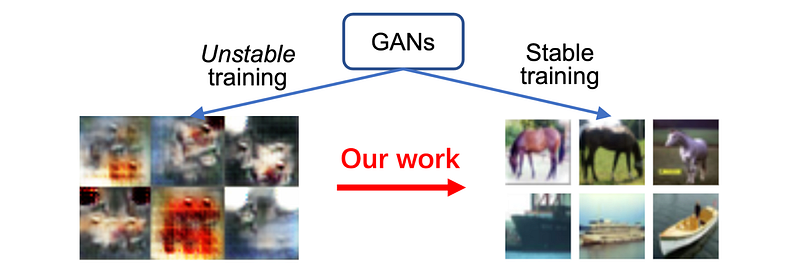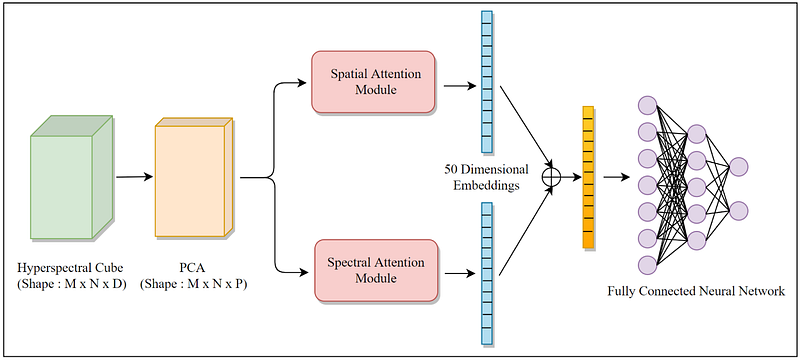Optional Spectral Normalisation
Easy:
Let’s imagine you’re playing with a magic wand that can do two special tricks: it can make anything invisible, and it can make anything visible again. Now, suppose you’re trying to play a game where you need to find hidden objects, but sometimes the objects are too shiny or too dim, making them harder to see. The magic wand can help you adjust the “brightness” of the objects so that they’re always just right for finding them.
Optional Spectral Normalization in deep learning is a bit like having this magic wand, but instead of adjusting the visibility of objects, it helps the computer understand and work with numbers in a special way that makes learning easier. Here’s how it works:
- Making Numbers Understandable: Just like how the magic wand can make objects invisible or visible, Optional Spectral Normalization helps the computer adjust the “scale” of numbers it uses to represent images or sounds. This adjustment makes it easier for the computer to learn from these numbers.
- Adjusting Brightness: In the game, you might not always need to use the magic wand because sometimes the objects are already at the perfect brightness. Similarly, Optional Spectral Normalization isn’t always necessary; it’s only used when it helps improve the learning process.
- Why It Helps: When the computer learns to recognize things like cats, dogs, or music, it needs to understand patterns in the numbers it sees or hears. If these numbers are too big or too small, it can get confused. Optional Spectral Normalization helps keep these numbers in a comfortable range, making it easier for the computer to learn.
- Using the Wand Wisely: Just like how you’d only use the magic wand when it really helps, Optional Spectral Normalization is applied selectively in certain layers of a deep learning model. This targeted approach helps the model learn more effectively without wasting time or resources on unnecessary adjustments.
So, think of Optional Spectral Normalization as a smart magic wand that helps the computer adjust the scale of numbers it deals with, making it easier to learn and understand the world through images, sounds, and more
Another easy example:
Imagine you are playing with a stretchy rubber band. Sometimes, you pull it too hard, and it stretches a lot, and sometimes you pull it just a little. Now, let’s say you want to make sure that no matter how you pull it, it stretches just the right amount — not too much and not too little.
In deep learning, we have something similar with neural networks. Neural networks are like very smart robots that learn from data, but sometimes, parts of these networks (like the connections or weights) can become too strong or too weak. This makes it hard for the network to learn properly.
What Does Spectral Normalization Do?
Spectral Normalization is like a magical tool that makes sure the connections in the network (the rubber bands) stretch just the right amount. It checks how stretchy (or powerful) each connection is and then adjusts it to make sure it’s not too strong or too weak.
How Does It Work?
- Measure the Strength: Imagine measuring how far the rubber band stretches. Spectral Normalization measures the “stretchiness” or the strength of the connections in the network. It uses something called the “spectral norm” to do this, which is a fancy way of saying it looks at the biggest stretch.
- Adjust the Strength: Once it knows how stretchy the connections are, it adjusts them so they all have the right amount of stretchiness. This makes sure the network learns in a balanced way.
Why Is It Important?
Just like how you wouldn’t want a rubber band to snap or be too loose, we don’t want the connections in the network to be too extreme. By keeping the connections balanced, Spectral Normalization helps the network to learn better and more reliably. This is especially important in making sure the network doesn’t get confused or make mistakes while learning.
Summary
Spectral Normalization in deep learning is like making sure rubber bands stretch just the right amount. It measures and adjusts the strength of connections in a neural network so they are balanced, helping the network to learn properly without getting confused. This makes the neural network smarter and better at understanding the data it learns from.

Moderate:
Optional Spectral Normalization is a technique used in the field of deep learning, particularly within the context of Generative Adversarial Networks (GANs) and other types of neural networks. The primary goal of spectral normalization is to stabilize the training process of these models, especially when dealing with complex architectures that can otherwise suffer from issues like mode collapse, vanishing gradients, or instability during training.
What is Spectral Normalization?
Spectral normalization is a method designed to normalize the weights of the discriminator in GANs. It does so by ensuring that the spectral norm (the largest singular value) of the weight matrix is 1. This normalization helps in stabilizing the training process by preventing the discriminator from becoming too strong relative to the generator, which can lead to the generator failing to learn effectively.
The idea behind spectral normalization is to constrain the discriminator such that its capacity to distinguish between real and generated data is limited, thereby allowing the generator more opportunities to improve its output without being outpaced by an overly powerful discriminator.
Why “Optional”?
The term “optional” suggests that this normalization technique can be applied selectively, depending on the specific requirements or constraints of a given model or dataset. Not all applications may benefit equally from spectral normalization, and in some cases, it might even hinder performance. Therefore, researchers and practitioners have the option to include or exclude this technique based on empirical results or theoretical considerations.
Implementation Considerations
Implementing spectral normalization requires additional computational steps compared to standard training processes. Specifically, calculating the spectral norm involves solving an eigenvalue problem, which can add overhead to each training iteration. However, several optimizations and approximations exist to make this process more efficient.
Conclusion
Optional Spectral Normalization is a valuable tool in the arsenal of techniques aimed at improving the stability and performance of deep learning models, particularly in the context of GANs. Its effectiveness can vary depending on the specific application and architecture, making it an optional rather than mandatory component in many scenarios.

Hard:
Optional Spectral Normalization (OSN) is a technique used in deep learning to stabilize and improve the training of neural networks. It is particularly useful for generative adversarial networks (GANs) and other models that require regularization to prevent issues such as mode collapse and unstable training dynamics. OSN builds on the concept of spectral normalization, which aims to control the Lipschitz constant of the model by normalizing the spectral norm of the weight matrices in the network.
Here’s a detailed breakdown of the concept:
Spectral Normalization
Spectral normalization is a method introduced to regularize neural networks by scaling the weight matrices. It ensures that the weight matrices have a controlled spectral norm, which is the largest singular value of the matrix. This helps in stabilizing the training process by preventing the gradients from exploding or vanishing. Spectral normalization is particularly effective in GANs, where it helps the discriminator to provide more reliable gradients to the generator.
Optional Spectral Normalization (OSN)
OSN takes the idea of spectral normalization further by introducing flexibility into the normalization process. Instead of applying spectral normalization to every layer or every weight matrix uniformly, OSN allows it to be applied optionally. This means that during training, the model can dynamically decide whether or not to apply spectral normalization to a particular layer or weight matrix.
Variations and Applications
There are different variations of SN, such as Bidirectional Spectral Normalization (BSN), which applies a similar intuition to improve the spectral normalization of Miyato et al. For fully connected layers, BSN keeps the normalization the same as SN. For convolutional layers, BSN normalizes by the spectral norm of the reshaped convolution kernel, which is a compromise between controlling output variance and variance of backpropagated gradients.
SN has been applied in various deep learning applications, including image generation, conditional image generation, and translation tasks[2]. It has also been used in reinforcement learning to stabilize the training of deep reinforcement learning models.
Theoretical Insights
Theoretical insights have connected the generalization gap of neural networks to the product of the spectral norms of the layers. This led to multiple implementations of SN, with the implementation of achieving particular success on GANs. The spectral normalization technique has been shown to naturally inherit the benefits of controlling variance throughout training.
Key Points
- Stabilizes GAN training: Spectral Normalization (SN) is used to stabilize the training of the discriminator in Generative Adversarial Networks (GANs).
- Lipschitz constant control: SN controls the Lipschitz constant of the discriminator by constraining the spectral norm of each layer.
- Implementation: SN involves normalizing the weight matrix by dividing it by its spectral norm.
- Variations: There are different variations of SN, such as Bidirectional Spectral Normalization (BSN), which applies a similar intuition to improve the spectral normalization of Miyato et al.
- Applications: SN has been applied in various deep learning applications, including image generation, conditional image generation, and translation tasks.
- Theoretical insights: Theoretical insights have connected the generalization gap of neural networks to the product of the spectral norms of the layers, leading to multiple implementations of SN.
Key Features and Benefits of OSN:
- Adaptive Regularization: By allowing the application of spectral normalization to be optional, the model can adaptively regulate the complexity of different layers. This leads to more efficient and effective regularization, as not all parts of the model may require the same level of normalization.
- Improved Performance: OSN can lead to better performance compared to always-on spectral normalization because it provides the model with the flexibility to optimize its parameters more freely while still maintaining stability.
- Stabilized Training: Like standard spectral normalization, OSN helps in stabilizing the training process, especially in adversarial settings like GANs, by controlling the Lipschitz constant of the network. This results in more stable gradient flows and prevents common issues like gradient explosion or vanishing.
- Enhanced Generalization: By avoiding over-regularization in parts of the network that do not need it, OSN can help improve the generalization performance of the model. This means the model is better at making accurate predictions on new, unseen data.
Implementation
Implementing OSN typically involves modifying the training algorithm to include a decision mechanism that determines whether to apply spectral normalization to a given layer during each training step. This can be based on various criteria, such as the current state of the training process, the specific architecture of the model, or empirical performance metrics.
Conclusion
Optional Spectral Normalization is a sophisticated regularization technique that enhances the training stability and performance of neural networks by introducing a dynamic and flexible approach to spectral normalization. Its ability to adaptively apply normalization helps in achieving a better balance between stability and flexibility, leading to improved training dynamics and generalization capabilities of deep learning models.

If you want you can support me: https://buymeacoffee.com/abhi83540
If you want such articles in your email inbox you can subscribe to my newsletter: https://abhishekkumarpandey.substack.com/
A few books on deep learning that I am reading:
Comments
Post a Comment